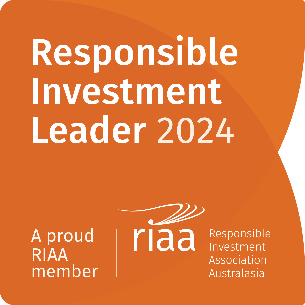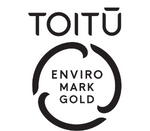Reporting Season

The recent reporting season in New Zealand provided investors with plenty of food for thought. While the reporting season was mildly positive (over half of our local stocks reported earnings that slightly exceeded analyst expectations), the market moved up by a remarkable 4.4% to record its monthly best performance in 18 years!
As has been the pattern of late, it doesn’t appear that earnings growth was the key driver of these returns. Instead, we continue to see external events, predominantly investment flows, playing a significant role in determining the overall valuation of the market and indeed pushing many companies further into expensive territory.
Among the best performing stocks over the month were a2Milk (+20.7%), Synlait Milk (+17.36%) Ryman Healthcare (15.8%) and Fisher & Paykel Healthcare 10.7%). Interestingly a2Milk was the only one of these companies to release a result during the month, and it had already been pre-announced so there were no surprises. These companies are examples of what analysts refer to as “growth” stocks. These businesses demonstrate good operating momentum, but investors are now paying a very high price to own them. While the market average PE is now historically very high at over 21 times next year’s earnings, the growth stocks above have far higher multiples on 12 months forward basis – a2Milk 33.5X, Synlait 26.3X, Ryman 28.5X (and much higher still on actual rather than reported profit) and Fisher & Paykel 41.2X. As the market cycle develops and matures in New Zealand and Australia, a time will come where valuations will again matter and “growth” stocks will face increased scrutiny. Value stocks and companies with challenged business models continued to get punished with the weakest performances last month coming from Sky TV (-20.7%), Fletcher Building (-9.5%) and previous market darling Tourism Holdings -8.2%.
While the NZX50 Gross Index was up a huge 4.4% for the month, 77% of this return came from just 3 stocks (ATM, FPH and Ryman) with the balance of the market up just 1%.
In Australia we saw a very similar trend with momentum stocks massively outperforming the general market. Australia is a much deeper market and has better statistics than NZ. In Australia the top PE quintile (the top 20% most expensive stocks as measured by PE multiple) in the broad market index (ASX300) leapt by an extraordinary 4.2 points in August, even though on average reported earnings for this group fell below expectations.
Momentum Stocks Rule PE Expansion by PE Quintile (ASX300)

Before we take a look at the key themes to emerge from the reporting season, it’s interesting to first reflect on the potential (or sometimes lack of) for genuine surprises to emerge in terms of company results. In a world governed by the rules of continuous disclosure it should be difficult for companies to materially surprise relative to the general consensus. Indeed corporates have now mastered the art of managing expectations in order to eliminate the element of surprise, especially when the news isn’t good. As a consequence, most analysis during the reporting season tends to be on the future outlook statements (either for explicit financial guidance or for general statements regarding future business conditions).
From this most recent reporting season, the key trends to emerge in results were across the areas of cost initiatives, capital management, and regulation.
Cost control has been an ongoing theme which is especially important given the low level of historic earnings growth evident in New Zealand over the past decade. Our local poster child for this has been Spark which will invest $57m in its Quantum project to reduce their net labour costs. This is expected to deliver them an annualised saving of $162m. Given recent strikes across the teaching, nursing and government sectors, near full employment and an increase in the minimum wage, labour costs in New Zealand are and will continue to be a key focus going forward. It is similar in Australia where labour costs continue to be a challenge, not only at large employers like the banking sector but also in the resurgent mining sector. Additionally, rising energy costs impacted a number of results, for example the speciality packaging company the Pact Group announced it had been hit by a 40% increase in energy charges, which were only partially recovered.
Capital management also continues to be a very topical theme. In New Zealand Trade Me joined an ever-increasing list of companies by declaring a special dividend. This announcement, combined with a statement of intention to continue distributing excess free cash flow to shareholders, saw the stock price rally materially (10.7%). In Australia this theme also continues to be a feature, with initiatives in this area supported by strong balance sheets and low long-term interest rates. However in Australia rather than paying special dividends, share buybacks appear more prevalent. As ANZ continues its $1.5bn share buyback it has recently been joined by RIO at $1bn, Crown at $400m and Qantas at $332m. We prefer share buybacks as the benefit is ongoing rather than one-off.
On the regulatory front, it’s interesting to consider when the ever-increasing list of governmental inquiries into New Zealand businesses might manifest itself into a growing equity risk premium. To date it hasn’t, although the early signs of concern may well be evident in the business confidence outlook. This survey dropped a further 5 points in August with 50% of respondents expecting business conditions to deteriorate in the year ahead. While the headline business confidence figure plumbed the depths last experienced in the Global Financial Crisis, and is likely therefore to be seen as unreasonably negative, there is no doubt that businesses are growing increasingly concerned about Government led cost pressures and direction.
In Australia business confidence sits near its long term average in spite of more political disruption. Following the sacking of Malcolm Turnbull and the appointment of Scott Morrison the Australian Government has had its 6th change in Prime Minister in 10 years. The new fragile government hovers on the brink of populism, making policy from poll to poll. With the Royal Commission into the banking sector yet to be concluded it seems politicians are now out to find the next vote-winning soundbite. To this effect the newly appointed Energy Minister, Angus Taylor has equated power companies with banks saying they have forfeited their social license and should brace for heavy-handed intervention to force down electricity prices. The Australian equity market is now broadly ignoring politics and focusing instead on company results. Overall listed company profits are expected to grow by 7.7% in FY19, marginally down from the rate of growth in FY18 of 8.3%. The overall Australian market (ASX200 Accumulation Index) rose 1.4% with the top quintile of PE stocks (the most expensive companies) up 9.6% in spite of a negative 3.9% earnings fall.
Taking all of this together, it was overall an impressive month for local markets. Looking ahead, we expect underlying economic conditions to differentiate themselves on either side of the Tasman, with New Zealand looking increasingly fragile while Australia maintains positive growth momentum (despite their political fiasco). As a consequence, we believe that the individual fundamentals of different businesses will matter more and more. As highlighted above, there are themes relevant across the markets and different sectors but beyond these, valuations and stock-specific risk increasingly need to be considered.





